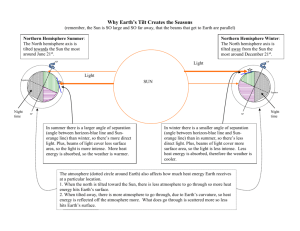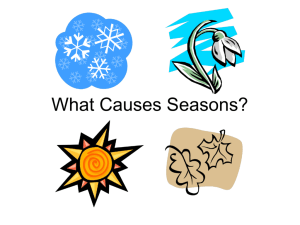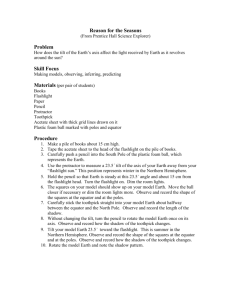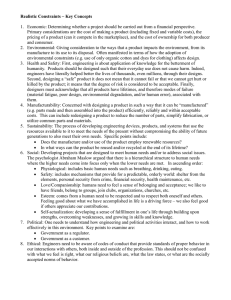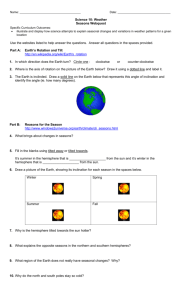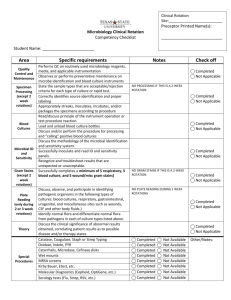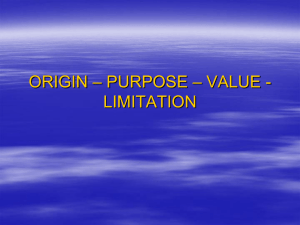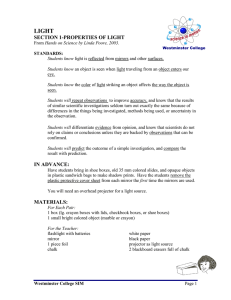SCIENCE CLASSWORK: Earth Time and the Reason for Seasons
advertisement
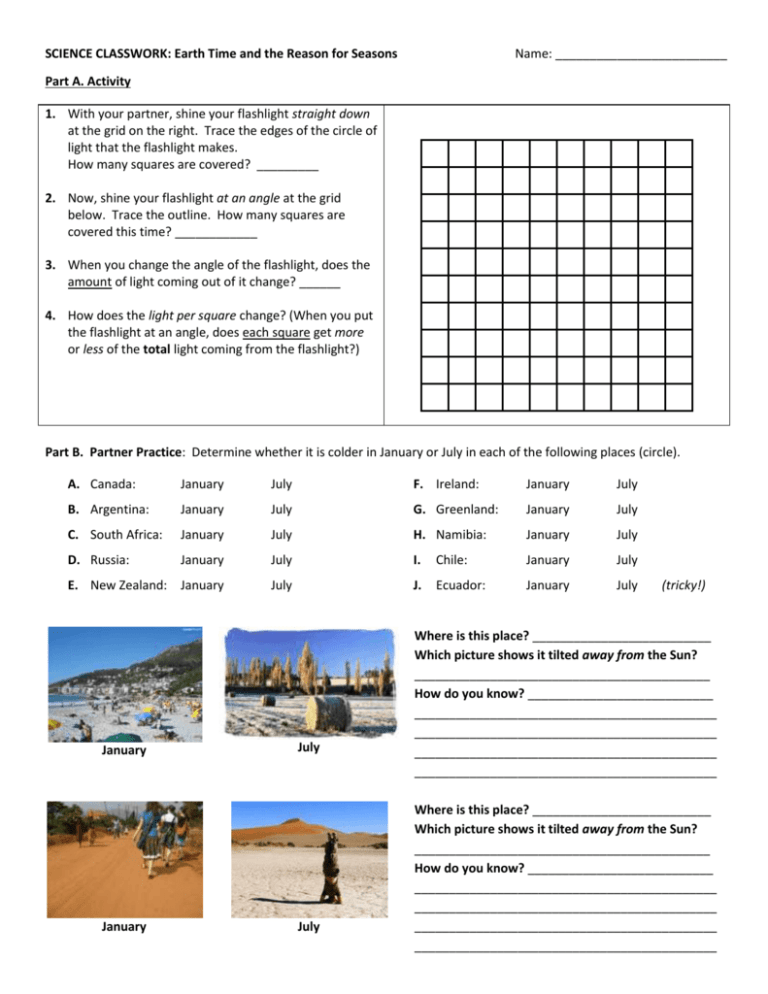
SCIENCE CLASSWORK: Earth Time and the Reason for Seasons Name: _________________________ _ Part A. Activity 1. With your partner, shine your flashlight straight down at the grid on the right. Trace the edges of the circle of light that the flashlight makes. How many squares are covered? _________ 2. Now, shine your flashlight at an angle at the grid below. Trace the outline. How many squares are covered this time? ____________ 3. When you change the angle of the flashlight, does the amount of light coming out of it change? ______ 4. How does the light per square change? (When you put the flashlight at an angle, does each square get more or less of the total light coming from the flashlight?) Part B. Partner Practice: Determine whether it is colder in January or July in each of the following places (circle). A. Canada: January July F. Ireland: January July B. Argentina: January July G. Greenland: January July C. South Africa: January July H. Namibia: January July D. Russia: January July I. Chile: January July E. New Zealand: January July J. Ecuador: January July January January July July (tricky!) Where is this place? __________________________ Which picture shows it tilted away from the Sun? ___________________________________________ How do you know? ___________________________ ____________________________________________ ____________________________________________ ____________________________________________ ____________________________________________ Where is this place? __________________________ Which picture shows it tilted away from the Sun? ___________________________________________ How do you know? ___________________________ ____________________________________________ ____________________________________________ ____________________________________________ ____________________________________________ 1. What’s the difference between Earth’s revolution and its rotation? 2. How long does it take the Earth to make one revolution? ____________________ 3. How long does it take the Earth to make one rotation? ____________________ 4. Why don’t we measure a month as the amount of time the Moon takes to travel around Earth? Part C. Independent practice 5. How many rotations occur in one of Earth’s revolutions? __________ 6. Convert each of the following into Earth time: A. One revolution of Earth + one rotation of Earth = _____ years _____ days _____ hours B. Two revolutions of Earth + 3.5 rotations of Earth = _____ years _____ days _____ hours C. 3.5 revolutions of Earth + 1.5 rotations of Earth = _____ years _____ days _____ hours D. 380.25 rotations of Earth = _____ years _____ days _____ hours E. 1462 rotations of Earth = _____ years _____ days _____ hours 1. Where is this place located (Northern Hemisphere, Southern Hemisphere, Equator, or Poles)? __________________ How do you know? Location A 2. At what (if any) time of year is the part of Earth where this place is tilted away from the Sun? ___________________ How do you know? Month Annual Weather in Location B Jan Feb Mar Apr May Jun Jul Aug Sep Oct Nov Dec Year Average high °C (°F) 28 (82) 28 (82) 27 (81) 26 (79) 25 (77) 25 25 (77) (77) 25 (77) 27 27 (81) (81) 27 (81) 27 (81) 26 (79) Average low °C (°F) 18 (64) 18 (64) 18 (64) 18 (64) 17 (63) 17 17 (63) (63) 16 (61) 17 17 (63) (63) 17 (63) 17 (63) 17 (63) 3. Where is this place located (Northern Hemisphere, Southern Hemisphere, Equator, or Poles)? __________________ How do you know? 4. At what (if any) time of year is the part of Earth where this place is tilted away from the Sun? __________________ How do you know?
